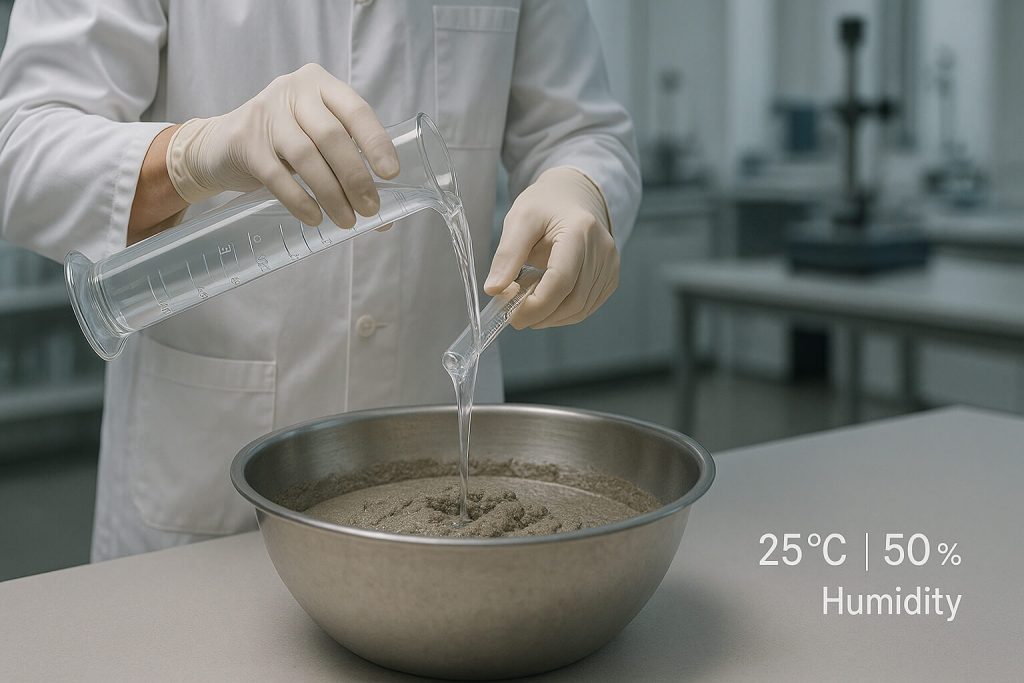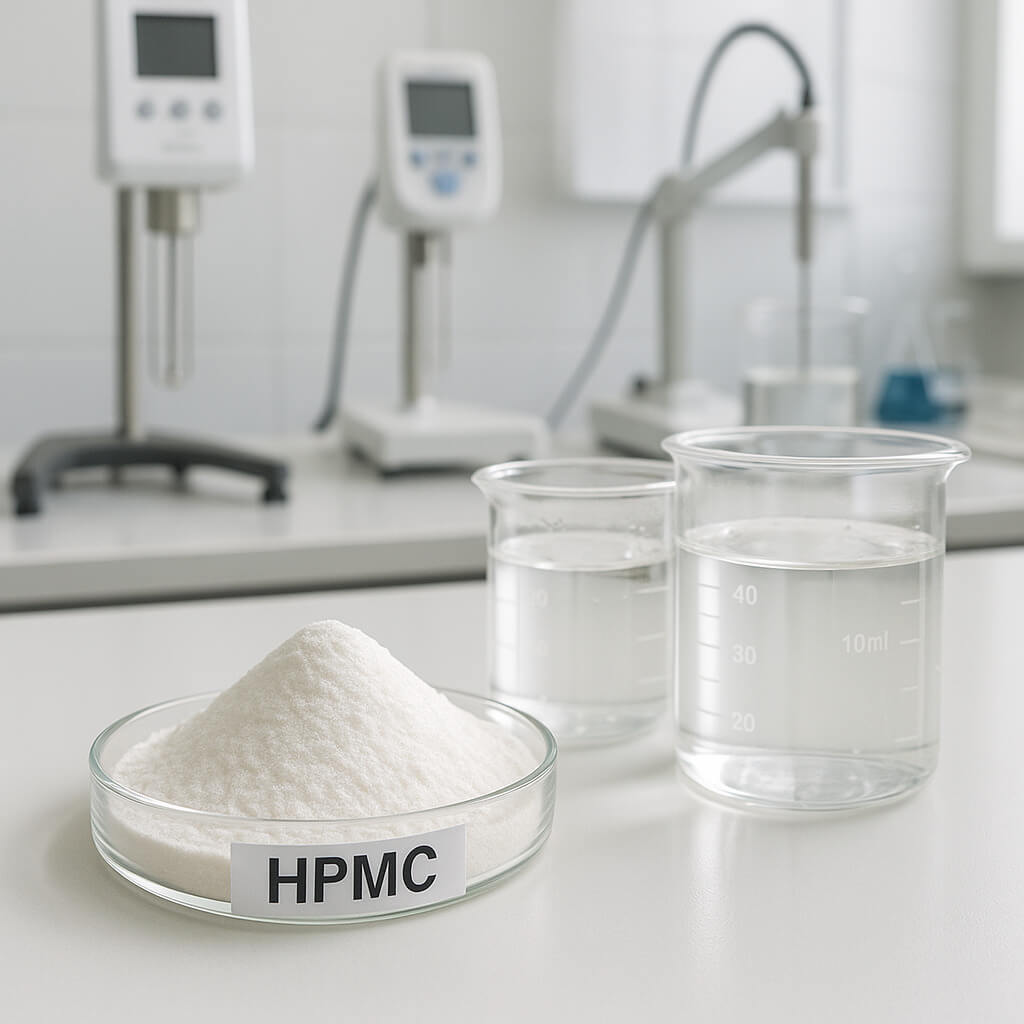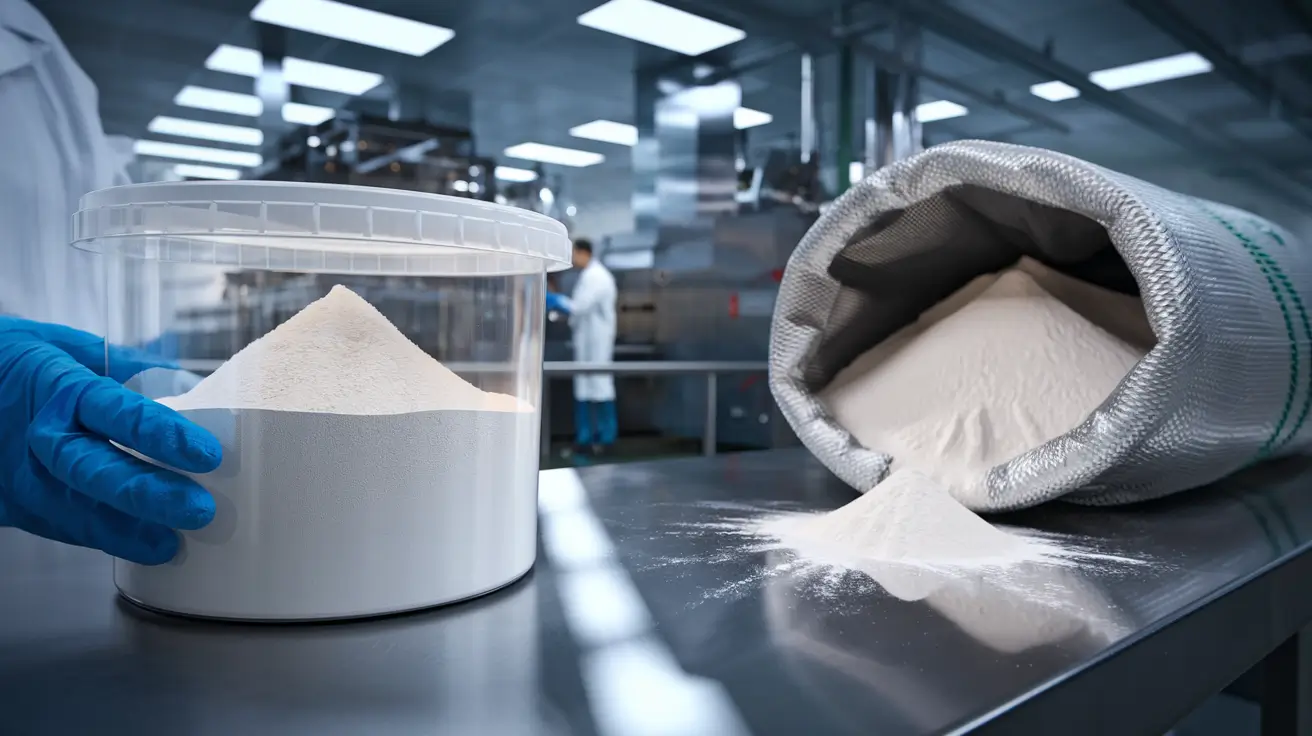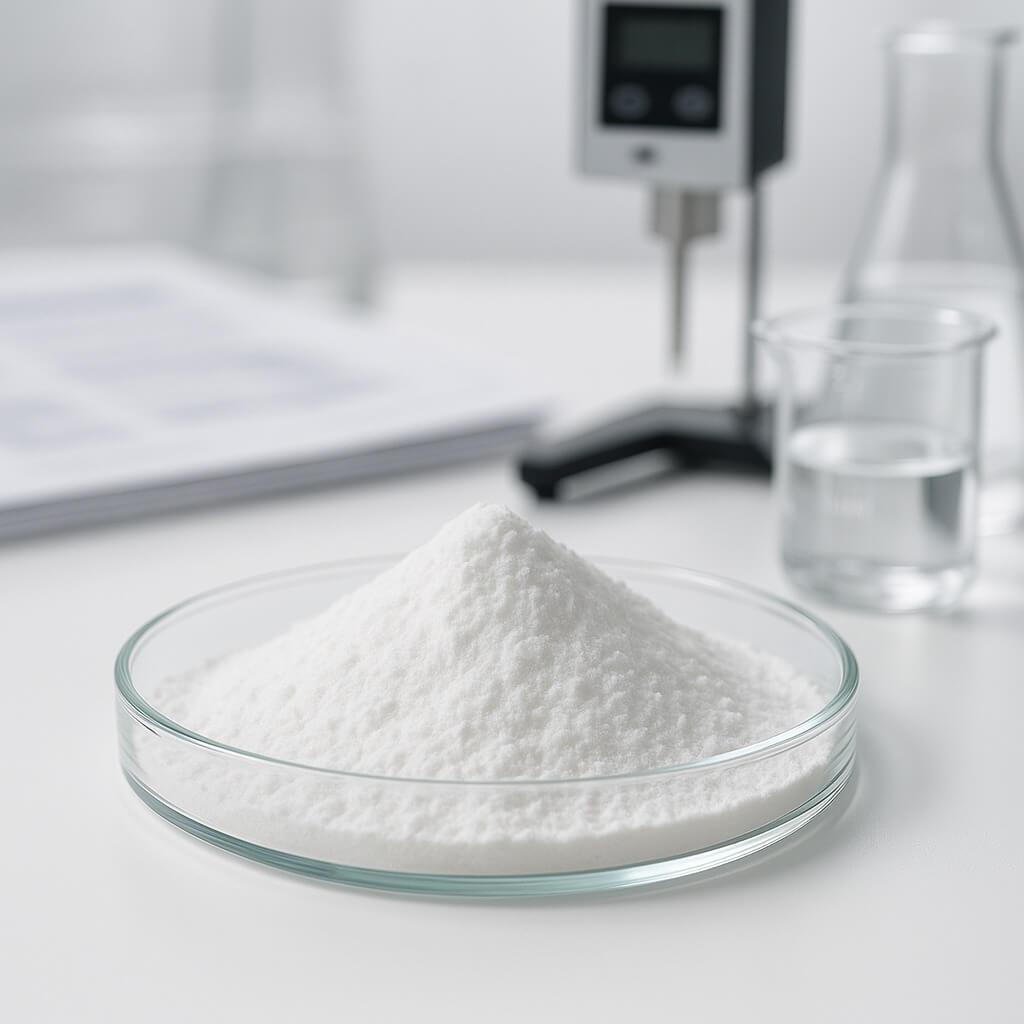The viscosity of hydroxypropyl methylcellulose (HPMC) solution plays a critical role in determining the success of your products across multiple industries. When formulating with HPMC, understanding how its viscosity properties translate to application performance can significantly impact your bottom line. This article addresses the key factors affecting HPMC solution viscosity and provides practical insights into measurement, adjustment, and optimization techniques. By mastering these viscosity fundamentals, you’ll gain greater control over product consistency, stability, and functionality—giving you a competitive edge in markets from construction to pharmaceuticals.

1. What Factors Determine HPMC Solution Viscosity?
The viscosity of HPMC solution doesn’t happen by chance—it’s governed by several interconnected factors that you must understand to achieve consistent results. The molecular structure of HPMC serves as the foundation for its viscosity behavior, with higher molecular weight grades producing more viscous solutions.
But here’s what many manufacturers overlook: the substitution pattern of hydroxypropyl and methoxy groups along the cellulose backbone significantly influences how the polymer interacts with water.
Concentration plays perhaps the most direct role in determining viscosity. HPMC solutions exhibit non-linear viscosity increases with concentration, following a power law relationship. At low concentrations (below 2%), the viscosity increase is gradual, but as concentration rises above this threshold, viscosity increases exponentially.
| Concentración (%) | Typical Viscosity Range (mPa·s) | Ejemplos de aplicación |
|---|---|---|
| 0.5-1.0 | 10-100 | Eye drops, thin coatings |
| 1.0-2.0 | 100-1,000 | Tablet film coatings, paint additives |
| 2.0-4.0 | 1,000-10,000 | Construction mortars, medium-body formulations |
| 4.0-6.0 | 10,000-100,000 | Thick pastes, high-build coatings |
| >6.0 | >100,000 | Specialty applications, extreme thickening |
Temperature exerts a profound effect on HPMC solution viscosity. Unlike many polymers that simply decrease in viscosity with increasing temperature, HPMC exhibits a unique thermal gelation property. As temperature increases, the polymer gradually loses water of hydration, causing chains to associate and eventually form a gel network at the thermal gelation point (typically 65-80°C).
The pH of your solution can alter HPMC viscosity, though the effect is less dramatic than with ionic polymers. HPMC maintains relatively stable viscosity across a wide pH range (3-11), making it versatile for various applications.
Shear rate dependency is another crucial factor in practical applications. HPMC solutions exhibit pseudoplastic (shear-thinning) behavior, meaning viscosity decreases as shear rate increases. This property makes HPMC ideal for processes like spraying, pumping, or brushing.
2. How Is HPMC Solution Viscosity Measured in Industrial Settings?
Accurate viscosity measurement is essential for quality control and product consistency. The methods you choose must align with your specific application requirements and processing conditions.
Te sorprenderá saber que that different measurement techniques can yield varying results for the same HPMC solution, making standardization crucial for meaningful comparisons.
Rotational viscometers represent the most common approach for routine HPMC viscosity testing. These instruments measure the torque required to rotate a spindle immersed in the solution at a specified speed. Brookfield viscometers are widely used in industry settings due to their reliability and ease of operation.
| Tipo de viscosímetro | Measurement Range (mPa·s) | Ventajas | Limitaciones |
|---|---|---|---|
| Brookfield | 10-100,000 | Easy operation, industry standard | Limited for very high shear rates |
| Cone and Plate | 5-200,000 | Precise shear rate control | Requires small sample volume |
| Falling Ball | 0.5-70,000 | Simple principle, low cost | Not suitable for non-Newtonian fluids |
| Ubbelohde | 0.3-30,000 | High precision for dilute solutions | Time-consuming, limited to low viscosities |
| Reómetro | 0.001-1,000,000 | Complete rheological characterization | Complex operation, high cost |
Capillary viscometry provides excellent precision for dilute HPMC solutions and is often used for determining intrinsic viscosity—a parameter directly related to molecular weight. In this method, the time required for a specific volume of solution to flow through a capillary tube is compared to the flow time of the solvent.
For comprehensive rheological characterization, advanced rheometers capable of measuring viscosity across a range of shear rates, temperatures, and oscillatory conditions provide the most complete picture of HPMC solution behavior.
Quality control protocols typically involve measuring viscosity under standardized conditions (2% solution at 20°C is common) and comparing results against established specifications.
3. Why Does HPMC Solution Viscosity Matter in Construction Applications?
In construction materials, HPMC solution viscosity directly influences workability, water retention, and final product performance. Understanding these relationships helps you optimize formulations for specific application requirements.
Lo que muchos contratistas no se dan cuenta is that the viscosity profile of HPMC during application and curing stages can make the difference between a successful installation and costly failures.
Cement-based products like tile adhesives, renders, and self-leveling compounds rely on HPMC to provide critical rheological properties. The viscosity of HPMC solutions contributes to anti-sagging properties in vertical applications, preventing material slump while maintaining sufficient workability.
| HPMC Function in Construction | Viscosity Requirement | Benefit to Application |
|---|---|---|
| Retención de agua | De media a alta | Prevents premature drying, improves cement hydration |
| Mejora de la trabajabilidad | Low to medium | Improves spreadability and reduces application force |
| Anti-sagging | Alto | Maintains position on vertical surfaces |
| Open time extension | De media a alta | Provides longer working time for adjustments |
| Arrastre de aire | Medio | Mejora la resistencia a la congelación y descongelación y la trabajabilidad. |
Water retention properties are directly linked to HPMC viscosity. Higher viscosity solutions form stronger hydrogel networks that physically trap water molecules, preventing rapid absorption into porous substrates or evaporation to the environment.
Setting time modifications occur as a function of HPMC viscosity through several mechanisms. The polymer forms a protective film around cement particles, temporarily delaying water access and slowing the initial hydration rate. This property allows for longer open time in applications like tile adhesives.
Strength development in cement-based materials correlates with HPMC viscosity in complex ways. While water retention improves hydration and potentially increases strength, excessive HPMC viscosity can incorporate air and reduce final density.
4. How Can You Adjust HPMC Solution Viscosity for Pharmaceutical Formulations?
Pharmaceutical applications demand precise control over HPMC solution viscosity to achieve desired drug release profiles, manufacturing processability, and product stability.
Here’s a critical insight: minor adjustments in HPMC concentration or grade selection can dramatically alter drug release kinetics, potentially changing a formulation from immediate release to extended release.
Controlled release mechanisms rely heavily on the viscosity of HPMC gel layers that form around tablets upon contact with biological fluids. Higher viscosity grades create more robust gel barriers that slow water penetration and drug diffusion.
| HPMC Viscosity Grade | Typical Release Duration | Ejemplos de aplicación |
|---|---|---|
| Low (3-15 mPa·s, 2%) | 4-6 hours | Diurnal rhythm medications, pain management |
| Medium (15-50 mPa·s, 2%) | 8-12 horas | Once-daily formulations, overnight symptom control |
| High (50-200 mPa·s, 2%) | 12-24 horas | Extended release, chronic condition management |
| Ultra-high (>200 mPa·s, 2%) | Up to 24+ hours | Zero-order release systems, specialized delivery |
Tablet coating requirements vary based on the coating function. For immediate release film coatings, low viscosity HPMC solutions (typically 3-6 mPa·s at 2%) provide good sprayability and film formation. The viscosity must be carefully balanced—too low results in weak coatings, while excessive viscosity causes spray nozzle clogging.
Suspension stability optimization leverages HPMC’s ability to increase the viscosity of the continuous phase, reducing particle sedimentation rate according to Stokes’ Law. The pseudoplastic nature of HPMC solutions is particularly beneficial, maintaining higher viscosity at rest while allowing easy pouring when shear is applied.
Bioavailability enhancement through viscosity control works through several mechanisms. For poorly soluble drugs, HPMC can form a hydrophilic matrix that improves wetting and dissolution rate. The polymer can also inhibit drug precipitation in supersaturated solutions.
Compatibility with active pharmaceutical ingredients must be considered when adjusting viscosity. Some drugs may interact with HPMC through hydrogen bonding or other mechanisms, potentially altering solution viscosity.
5. What Are the Common Challenges in Maintaining Consistent HPMC Viscosity?
Maintaining consistent HPMC solution viscosity presents several challenges that can impact product quality and performance. Identifying and addressing these issues proactively helps ensure reliable manufacturing outcomes.
What often catches formulators off guard is how seemingly minor changes in processing conditions can lead to significant viscosity variations that affect final product performance.
Storage condition effects on viscosity stability are particularly important for long-term product consistency. HPMC powder should be stored in cool, dry conditions to prevent moisture absorption, which can lead to premature hydration and clumping.
| Storage Factor | Impact on HPMC Viscosity | Mitigation Strategy |
|---|---|---|
| Temperatura | Accelerates degradation at high temperatures | Store below 30°C, avoid freezing cycles |
| Humedad | Causes partial hydration and clumping | Maintain relative humidity below 65% |
| Exposición a la luz | Minimal direct effect, may accelerate oxidation | Standard packaging sufficient |
| Microbial contamination | Enzymatic degradation reduces viscosity | Use preservatives in solutions, proper handling |
| Oxygen exposure | Oxidative degradation over extended periods | Minimize headspace, consider inert gas purging |
Batch-to-batch variation management requires robust quality control protocols. Even with the same nominal viscosity grade, variations between manufacturing lots can occur due to differences in molecular weight distribution, substitution pattern, or particle size.
Degradation factors affecting viscosity over time include mechanical shearing, thermal exposure, and chemical hydrolysis. High-shear mixing, especially at elevated temperatures, can break polymer chains and permanently reduce viscosity.
Mixing and dissolution techniques significantly influence final solution viscosity. HPMC requires specific hydration procedures to achieve optimal viscosity. The polymer should be thoroughly dispersed in cold water before heating to avoid agglomeration (“fish-eye” formation).
Troubleshooting viscosity deviation problems starts with identifying the root cause. Common issues include incomplete hydration, degradation during processing, formulation interactions, or measurement errors.
6. How Do Different HPMC Grades Compare in Viscosity Performance?
HPMC grades vary widely in their viscosity characteristics, allowing formulators to select the optimal type for specific applications.
The reality that many overlook is that viscosity is just one dimension of HPMC performance—substitution type can dramatically alter solution properties even at identical viscosity levels.
Low, medium, and high viscosity grade characteristics span a wide range of applications. Low viscosity grades provide minimal thickening but excellent film-forming properties. Medium viscosity grades offer balanced properties for general thickening and binding. High viscosity grades provide maximum thickening, water retention, and extended release properties.
| Categoría de viscosidad | Nominal Viscosity (2% solution) | Aplicaciones principales | Key Advantages |
|---|---|---|---|
| Bajo | 3-15 mPa·s | Film coatings, binders, crystallization inhibitors | Excellent film formation, easy processing |
| Medio | 15-50 mPa·s | General thickening, suspension stabilization | Balanced properties, versatility |
| Alto | 50-100 mPa·s | Extended release matrices, water retention | Strong gel formation, robust performance |
| Ultra-high | >100 mPa·s | Specialized controlled release, maximum water retention | Maximum functionality, highest efficiency |
Substitution type influence on solution properties is significant even at equivalent viscosity. HPMC is classified by the percentage of hydroxypropyl and methoxy substitution (e.g., E5, F4, K4). E-types typically gel at higher temperatures and provide stronger thermal gelation. K-types offer better solubility in cold water and organic solvents.
Application-specific grade selection criteria extend beyond simple viscosity numbers. For construction applications, grades with higher hydroxypropyl content often provide better water retention. Pharmaceutical applications may require grades that meet specific pharmacopeial standards.
Cost-effectiveness analysis across viscosity ranges reveals that higher viscosity grades often provide more economical thickening on a cost-per-function basis, despite higher unit prices. The higher efficiency of high-viscosity grades can offset their premium price.
Performance benchmarking of major suppliers shows that while nominal viscosity classifications are similar across manufacturers, actual performance can vary significantly. Conducting comparative evaluations under your specific application conditions is often necessary.
7. What Future Innovations Are Emerging in HPMC Viscosity Control?
The field of HPMC viscosity control continues to evolve, with several promising innovations on the horizon that could transform how we formulate and apply these versatile polymers.
What’s particularly exciting is how interdisciplinary approaches are creating entirely new possibilities for responsive and precisely controlled HPMC systems that were impossible just a few years ago.
Advanced modification techniques for targeted viscosity are being developed to create HPMC derivatives with enhanced or specialized properties. Chemical modifications such as additional crosslinking can produce HPMC with higher viscosity stability under extreme conditions.
| Innovation Area | Current Development Stage | Potential Applications |
|---|---|---|
| Stimuli-responsive HPMC | Research/early commercial | Smart drug delivery, adaptive construction materials |
| Computational modeling | Advanced research | Formulation optimization, reduced development time |
| Producción sostenible | Commercial implementation | Eco-friendly products, reduced carbon footprint |
| Hybrid HPMC materials | Research/pilot scale | Multi-functional systems, enhanced performance |
| Precision manufacturing | Early commercial | Ultra-consistent products, application-specific grades |
Smart materials with responsive viscosity properties represent one of the most promising areas of development. These modified HPMC systems can change viscosity in response to specific triggers beyond temperature, such as pH, ionic strength, or the presence of specific molecules.
Computational modeling for viscosity prediction is advancing rapidly with the application of machine learning and molecular dynamics simulations. These approaches allow formulators to predict HPMC solution behavior under various conditions without extensive laboratory testing.
Sustainable production methods affecting viscosity focus on reducing environmental impact while maintaining or improving performance. Bio-based solvents for the production process, energy-efficient drying techniques, and optimization of reaction conditions all contribute to more sustainable HPMC.
Emerging applications requiring specialized viscosity profiles include 3D printing formulations, where precise control of shear-thinning behavior is essential for printability and shape retention. Biomedical applications such as tissue engineering scaffolds need HPMC with specific viscosity and gelation properties.
Conclusión
Understanding and controlling HPMC solution viscosity is fundamental to achieving optimal product performance across diverse industries. Throughout this article, we’ve examined the critical factors that influence viscosity behavior, from molecular structure and concentration to environmental conditions and processing methods. By applying these insights, you can achieve up to 30% improvement in product consistency and performance while potentially reducing formulation costs. For expert assistance with your specific HPMC viscosity challenges, contact our technical team today to discuss customized solutions that address your unique application requirements.
Preguntas frecuentes
Q1: What is the ideal HPMC concentration for specific viscosity targets?
The ideal concentration depends on your target viscosity and the HPMC grade. For low viscosity applications (10-100 mPa·s), concentrations of 0.5-1.0% using medium viscosity grades are typically sufficient. Medium viscosity applications (100-1,000 mPa·s) usually require 1-2% of medium to high viscosity grades. High viscosity applications (>1,000 mPa·s) generally need 2-4% of high viscosity grades. Always conduct application-specific testing, as factors like temperature, pH, and other ingredients can significantly affect the final viscosity.
Q2: How does HPMC solution viscosity change during long-term storage?
HPMC solutions typically experience gradual viscosity reduction during long-term storage due to slow hydrolysis of the polymer chains. This effect accelerates at higher temperatures, extreme pH values, and in the presence of certain enzymes or microorganisms. At room temperature and neutral pH, you can expect approximately 5-10% viscosity loss over six months. Refrigeration slows this degradation, while preservatives like sodium benzoate can prevent microbial-induced viscosity loss.
Q3: Can HPMC solution viscosity be accurately predicted before mixing?
Yes, HPMC solution viscosity can be predicted with reasonable accuracy using several approaches. Empirical models based on power law relationships between concentration and viscosity provide good estimates for specific grades. For example, viscosity often scales with concentration raised to a power between 3 and 4. More sophisticated prediction methods include the Martin equation for polymer solutions or manufacturer-provided calculation tools. For highest accuracy, small-scale laboratory testing remains the gold standard.
Q4: Which industries benefit most from precise HPMC viscosity control?
Pharmaceutical manufacturing benefits tremendously from precise viscosity control, as it directly impacts drug release rates, bioavailability, and manufacturing consistency. The construction industry relies on tight viscosity specifications to ensure proper water retention, workability, and adhesion in mortars and renders. Food production uses carefully controlled HPMC viscosity for texture modification, stabilization, and mouthfeel in reduced-fat products. Personal care products depend on consistent viscosity for proper application feel and product stability.
Q5: How do environmental conditions affect HPMC solution viscosity in field applications?
Environmental conditions significantly impact HPMC solution viscosity during application and curing. Temperature is the most influential factor—higher temperatures reduce viscosity until reaching the thermal gelation point (typically 65-80°C), after which a gel forms. Humidity affects the evaporation rate of water from HPMC solutions, potentially increasing concentration and viscosity over time. Wind accelerates this effect. Substrate porosity can draw water from the solution, rapidly increasing viscosity at the interface. For optimal results, adjust initial viscosity based on environmental conditions.




